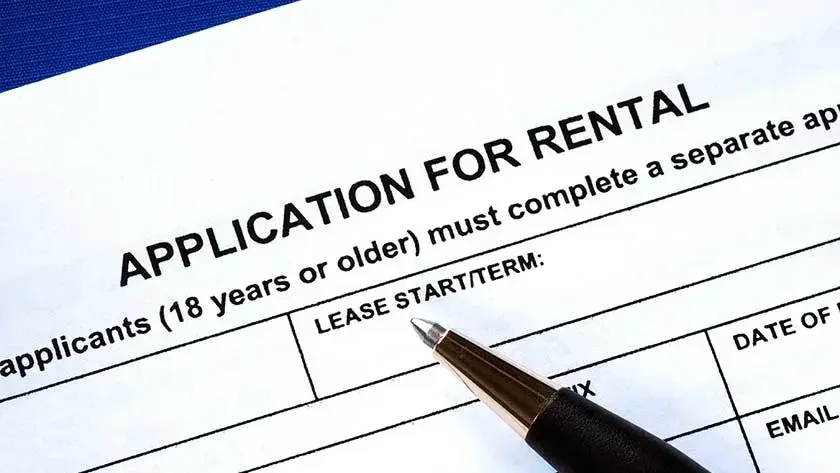As a landlord, before you rent an apartment, you want to have at least a simple lease agreement in place.
Leases are contracts between you and your tenants. Their provisions are enforceable in court by both of you. While local and state laws have strict requirements about your duties as a landlord, a lease defines both yours and the tenants' duties.
Follow these tips to prepare a one-page lease or to write your own simple lease agreement.
Comprehensive and simple lease agreements
Most good lease agreements contain numerous provisions and pages specifying what each party agrees to do. If you want a comprehensive lease agreement, an attorney should prepare one for you, or you can find some long forms online.
If you just want a simple lease agreement, you can prepare a one-page lease agreement from online forms. You also can have a lease agreement custom-made for you. While it's preferable to have a detailed lease, you can still protect your rights with a simple lease agreement.
How to write a simple lease agreement
There are provisions every lease should have, whether the lease is six pages or one page. Because the lease is a contract, it must include promises by you and promises by the tenant, such as the tenant's promise to pay rent. You should write the lease in clear, understandable language.
There are many simple lease forms online. Most of them contain at least the following provisions:
- Description. Use the header: "Lease," "Lease Agreement," or "Residential Lease Agreement." Don't call it a "Rental Agreement" because that signifies a different agreement. You're also renting the entire apartment directly to the primary tenant, so it's not a room rental or sublease.
- Landlord's and tenant's names. Some leases also contain the tenant's current address and contact information, and your business address. Your names appear at the top of the lease, with the date and the words "Landlord" and "Tenant" after each name.
- Property description. Identify the property by street name, and by house and apartment numbers. If there's no number on the apartment, such as an apartment in a three-family home, identify its location, such as "second-floor apartment."
- Tenancy term. This is the length of the lease, such as one year, or the date the lease ends. The more specific you are, the more you're protected, so it's beneficial to list the last day of the tenancy. Most leases are for a year or more, although some leases are for as little as six months.
- Every occupant's name. Make sure you list each person who will inhabit the apartment, which specifically excludes anyone else from living there. You should also state before the names that only the following people can occupy the apartment. Of course, if the tenants have a baby while living there, the new baby becomes a tenant.
- Monthly rent. Include the due date of the rent, where the tenant sends the rent check, and whether you accept credit cards. If you decide to charge late fees, check your state's law first to see what you can charge. You can include the amount of late fees and when they're due with the clause for rent.
- Security deposit. Make sure you know your state and local law about how much you're allowed to get as a security deposit and list the amount in this clause.
- Subleases or assignments. If you don't want the tenant bringing in someone you don't know, you can either state that subleases or assignments are not permitted without your approval, or you can permit or refuse to allow them.
- What's included. State whether the apartment comes furnished or unfurnished, and state which appliances you're including. State whether the tenant gets a parking space and if so, identify the space.
- Pet clause. State whether you allow pets, and if so, what type of pets. You also should state that if the pet becomes a nuisance, you can terminate the lease. State that the tenant is responsible for any pet damage. List whether you're charging extra for pets.
- Tenant's duties. State what the tenant can and cannot do, such as no smoking in the building, maintaining the apartment in good condition, and agreeing that the apartment was in good repair when they moved in. State that your other tenants have the right to quiet enjoyment of their apartment, and you can evict for violation of quiet enjoyment. Include that the tenant must purchase apartment insurance and that the tenant must allow you to enter to make repairs after they give you proper notice.
- Other grounds for eviction. State that the tenant may not engage in illegal activities, may not make alterations to, or damage the apartment, and that doing any of these is grounds for eviction.
- Landlord's duties. You have the duty to make repairs and exterminate upon notice by the tenant, but the tenant pays for the repairs if they caused the damage. Check your state's laws to see how much notice you must give before you enter the apartment. Don't promise to repair something expensive or unnecessary.
- If the tenant breaks the lease. Some states' laws explain how much you can charge if this happens, so make sure you know the law.
- Utilities. Specify whether you're including utilities in the rent.
- Lease renewal. State what notice the tenant must give you if not renewing, and what notice you'll give if you choose not to renew.
- Governing law. Say exactly which state's laws govern.
- Landlord's and tenant's signatures. List the words "Landlord" and "Tenant" under signature lines. Sign and date the lease.
While you can have fewer clauses than these, you should consider putting these clauses in your lease. A written lease protects you better than an oral one. It also lets the tenant know what's required of them before they move in, which, overall, promotes more harmony between you and your tenant.


